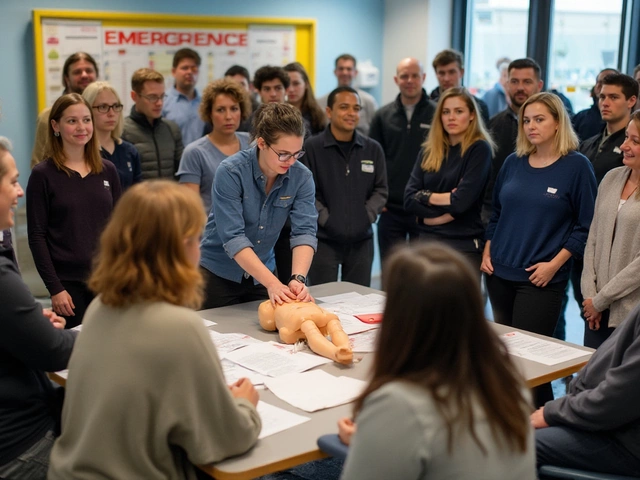All About Safety Programs – Your Quick Guide
Welcome to the safety program hub. Here you’ll find straight‑to‑the‑point articles that help you set up, run and improve safety training at work. Whether you’re a manager, a safety officer or just curious about what makes a good safety plan, the posts below cover the basics and the details you need.
Who Handles Safety Training?
One of the most common questions is: who is really responsible for training employees? Our article Who is Responsible for Safety Training? breaks down the legal duties, the role of employers, and how to share the load with supervisors and external providers. You’ll learn which parts of the law apply to you, how to avoid costly fines, and simple steps to make sure everyone gets the right training.
Choosing the Right Qualification
If you’re thinking about a career in safety, the guide Best Degrees for a Career in Safety walks you through the most useful qualifications. It compares occupational health, environmental safety and safety management degrees, pointing out which ones lead to higher‑paying jobs and what employers look for.
Other posts on the page give you a taste of related topics. For example, the police academy article shows how pay works during training, while the fire academy piece tells you how long the program lasts and what to expect on a daily basis. Even non‑safety posts like the IT certification guide or the welding timelines are useful because they share study tips that work across any technical training.
What makes a safety program effective? First, start with a clear risk assessment. Identify the hazards specific to your workplace – whether it’s machinery, chemicals or ergonomics – and rank them by severity. Then, create short, focused training modules that address each risk. Keep records of who’s completed what; this not only proves compliance but also lets you spot gaps quickly.
Next, involve staff in the process. Ask workers for feedback after each session – they’ll tell you if something feels unclear or irrelevant. Adjust the material and repeat the cycle. This keeps training fresh and shows employees that safety isn’t just a checkbox.
Technology can help, too. Simple video tutorials, mobile quizzes and digital sign‑ins make it easier to deliver content to shift workers or remote sites. Our post on NVQ vs SVQ explains how vocational qualifications can be earned online, which is a handy model for safety courses that don’t need a classroom.
Remember, a safety program isn’t only about avoiding accidents; it’s also about building a culture where everyone looks out for each other. Celebrate milestones – like a month without recordable injuries – and reward teams that follow procedures. Small recognitions keep morale high and reinforce good habits.
Finally, stay up‑to‑date with regulations. Laws change, new hazards emerge, and industry standards evolve. Subscribe to a reliable health‑and‑safety newsletter or set a quarterly review on your calendar. When you combine solid training, employee involvement and ongoing updates, your safety program will stay strong and effective.
Browse the articles on this page, pick the ones that match your needs, and start building a safer workplace today.




